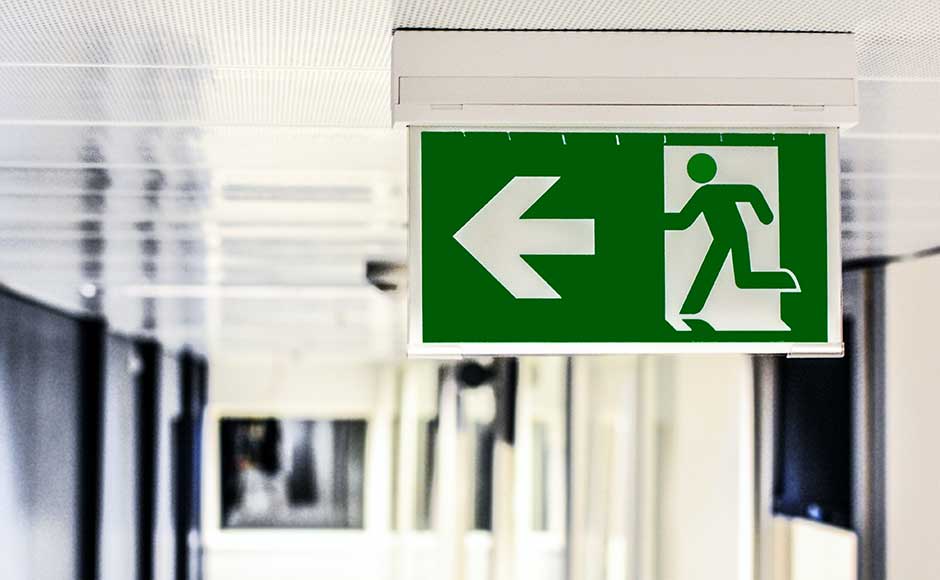Emergency fire action plan
The Charity Trustees must ensure that there is a written emergency fire action plan in place that sets out the action that must be taken by employees and volunteers in the event of a fire, and to ensure the safe evacuation of properties.
The evacuation of persons from the building cannot be delegated to the fire and rescue services in the first instance. Emergency procedures should clearly establish the actions that all persons should take in the event of discovering fire, or upon hearing the warning of fire, and any additional instructions as necessary.
Procedures should be in written format and be easily understood. For small premises the information and instruction may be written in the form of a simple emergency action notice. For larger premises it is expected that emergency plans will be more robust and provide details on the exact arrangements and roles to be carried out.
Emergency procedures and fire action notices are commonly displayed on notice boards at main entrances and other information focal points within buildings. You should also consider providing a diagram of the building showing the layout of each floor and the location of key fire safety equipment (extinguishers, break glass call points) and the main fire exit routes.
An example of an emergency fire evacuation plan and schematic floor diagram is available in the additional documents section below.
Where evacuations of the building rely on nominated stewards to perform certain functions, such as opening doors or assisting disabled persons, they should receive information and training for their exact roles.
Attention should also be paid to the type of activity the building is being used for and expected occupancy numbers for any given event. Greater stewarding and control for events concerning large numbers of people will be required, including persons at particular risk such as children and the disabled.

Emergency procedures should also be shared with activity groups, leaseholders and contractors prior to bookings, activities or works commencing. Third-party activity groups, leaseholders and contractors may also be asked to provide their own specific emergency evacuation arrangements and fire safety risk assessment dependant on the extent of their control over the building or due to any specific work activities that may increase the overall fire risk to the building. Collaborating and sharing the emergency evacuation plans is recommended to ensure exits and escape routes are sufficient and everyone can work together to ensure quick and efficient evacuation of the building.
Where buildings are used for regular activities by groups, we recommend adopting a terms and conditions of hire which should detail the role and responsibilities of the group leaders concerning the general fire safety precautions that must be followed, as well as emergency evacuation plans for the building.
The complexity and content of emergency fire procedures can vary significantly based on the size and use of each premises. However, as a minimum the key components should include:
- The actions to be taken on hearing the fire alert or on discovering fire
- The location of the fire assembly point
- Arrangements for calling the Fire and Rescue Services and, when necessary, meeting the fire crews on arrival to give a situational report of the incident
- The specific actions performed by persons nominated to assist with evacuations, i.e. informing and directing persons to exit doors, determining the approximate location of fire, checking rooms when exiting, operating fire equipment, assembly point roll call
- Arrangements for the evacuation of persons requiring additional assistance, i.e. wheelchair users, visually or hearing impaired, cognitively impaired
- The procedures for isolating any high-risk processes or critical services such as mains electrical supplies and gas supplies.
It is important to consider how employees, volunteers and visitors with disabilities will be helped from properties and also how to safely evacuate any children or young people. For example, during worship, duty elders could be asked to take responsibility for the safe evacuation of a property in case of emergency. The Charity Trustees may also nominate fire stewards that are familiar with the evacuation plans and building layout to ensure safe evacuation practices.